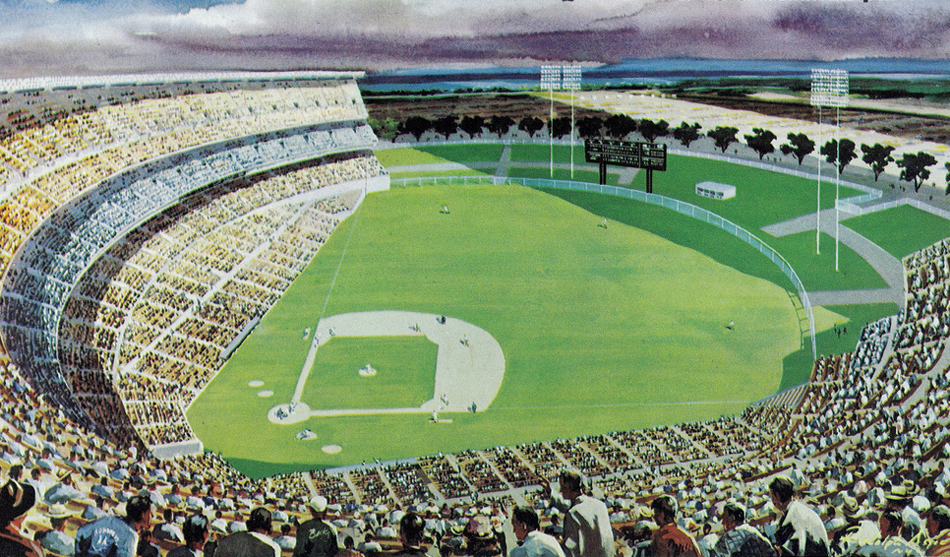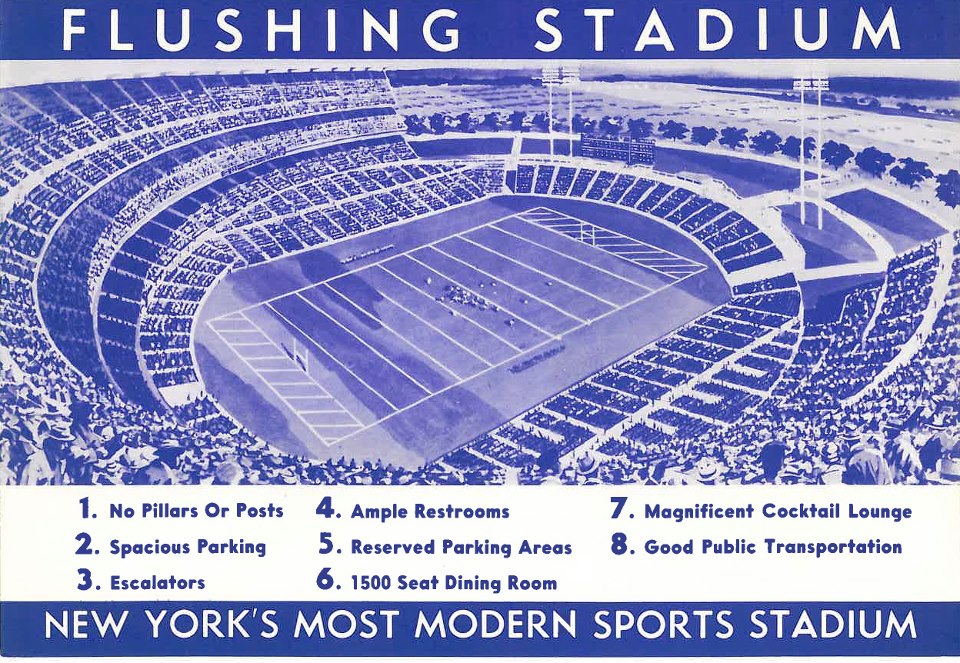Tonight the New York Mets will host Game 3 of the World Series — and just in time, after Games 1 and 2 in Kansas City didn’t well. Citi Field will be in the spotlight, but many fans will fondly remember where the Mets won a World Series for the first time: Shea Stadium.
A game in New York in October is not news. The New York Yankees have made a tradition of reaching (and winning) the Fall Classic, the Brooklyn Dodgers franchise represented the National League nine times before relocating to Los Angeles, and the New York Giants made it 14 times before heading to San Francisco. This year represents the Mets’ fifth World Series appearance.
The difference here is in the here, the setting. Friday night marks the first time a World Series game will have been played at Citi Field, now in its seventh season after opening in 2009. That first season, the Mets finished 70-92, 23 games out of the division lead. If you thought the team just needed to get used to its new digs, consider that until this season, the park not only hadn’t housed a winning team, it hadn’t seen a Mets ball club that finished closer than 17 games out of first.
Welcome to the World Series, Citi Field.
And, since the occasion presents itself, let’s think back to the last time a relatively young Mets ballpark — less than a decade in use — welcomed in the Fall Classic for the first time.
The franchise has had three homes in its history, Citi Field being the third. The first is recalled mostly by original fans and ballpark aficionados: the iconic Polo Grounds, home to the New York Giants, site of Willie Mays’s The Catch in the 1954 World Series, New York Metropolitans home facility in 1962 (120 losses) and 1963 (111 losses), and demolished with a wrecking ball painted to look like a baseball in 1964.
The Polo Grounds was displaced for the 1964 season, which the Mets broke in with a third straight last-place finish, thanks to a 53-109 record. They did leave the cellar in 1966 and 1968, finishing ninth out of ten teams in the National League, and 24 games out of first at their best. And with that slight bit of optimism at their backs, the New York Mets embarked upon an amazing 1969 campaign, their sixth year in Shea Stadium.
Today, we think of the best ballparks as optimally one-sport facilities. In the 1960s, the thought was reversed. Shea Stadium was steel, concrete, and all-purpose, designed to host both the Mets and the AFL’s New York Jets, the second such stadium to open. It was big and round — a “concrete doughnut” — with lights placed around the top of the park instead of traditional light poles for Roy Hobbs to target, four restaurants, a system of escalators, and an 86-ft. x 175-ft. scoreboard. There were two movable stands, operated by motor, to aid in converting between baseball and football, although these left bad track marks on the grass in September, when both sports were in progress concurrently.
As it was, the park served plenty of needs. It hosted the All-Star Game in its very first season, a 7-4 come-from-behind National League win. A throng of over 55,000 flooded through the gates in 1965 to see the Beatles. (They understandably returned for another concert in 1966.) And in 1969, when the Mets finally — miraculously — started winning, New Yorkers cheered them on in unmatched numbers.
Playing in the newly created National League East, the energy of organist Jane Jarvis at their backs, the Mets overtook the Cubs with a 38-11 finish to cinch the first division title. Their overall record was 100-62, posted before an MLB-best season-long attendance of 2.175 million, four times as many fans drawn by the Padres and the Phillies. (The Mets were the only team in the Majors in 1969 to bring in over two million fans.)
With East and West divisions now in effect, Major League Baseball saw its first League Championship Series that autumn, a prelude to the World Series. Games 1 and 2 of the National League Championship Series were held in Atlanta, each one won by the New Yorkers. Shea Stadium’s first playoff pitch was witnessed on October 6, Game 3. In front of a crowd of 54,195, the Amazin’s overcame an early 2-0 deficit and finished a three-game sweep of the Braves with a 7-4 triumph. The winning pitcher was Nolan Ryan, 22 years young, who came on in relief in the third inning and tossed blinding fastballs the rest of the way.
Games 1 and 2 of the 1969 Fall Classic were similarly held on the road, just as they were this year. The opponent was the favored Baltimore Orioles, a 109-win squad in the regular season. The O’s held true to expectations in the series opener, defeating Tom Seaver at Memorial Stadium, 4-1. But the Mets struck back with a 2-1 win the next day, thanks to a two-out ninth-inning RBI single by Al Weis, a .215 hitter in the regular season.
56,335 showed up for the very first World Series game at Shea Stadium. It was Tuesday, October the 14th, and it did not take long for the faithful to roar with approval. Tommie Agee led off the bottom of the first with a homer off of future Hall of Famer Jim Palmer. He added highlight-reel catches in the fourth and seventh innings, and Gary Gentry combined with Nolan Ryan on a four-hit shutout. Mets 5, Orioles 0.
Two more Mets victories followed, a 2-1 extra-inning win in Game 4 and a 5-3 comeback triumph in Game 5, and the championship was theirs, captured upon their home field. 57,397 were present for the series-clinching win, the largest crowd yet. As Arthur Daley penned, “They came tumbling from the stands by the thousands, lit red flares, brandished signs and whooped it up in unrestrained glee. They stole all the bases, including home plate, and ripped up the turf for souvenir pieces until it was as pockmarked as a battlefield.”
Forty-six years later, what remains of Shea Stadium now lies in different sorts of pieces: scraps of memory, triggered by thoughts of dazzling young pitching, unexpected success, and that familiar combination of Dodger blue and Giant orange.
This article originally appeared in this week’s Ballpark Digest newsletter. Are you a subscriber? If not, sign up and join the 9,900 subscribers to the free newsletter, featuring stories like this and a list of the most recent articles posted to the site. You can sign up here.



